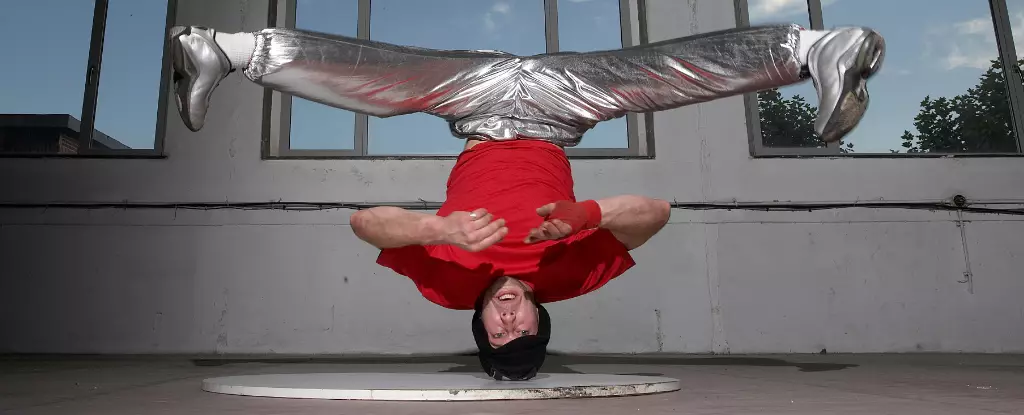Many who lived during the 90s will fondly recall the comedic film “Coneheads,” but for breakdancers, the term takes on a much more serious meaning. A recent medical case study has shed light on an unintended consequence of performing acrobatic headspins: a condition informally dubbed “breakdancer bulge,” more formally known as a “headspin hole.” This phenomenon, reported in a 2024 case, highlights a unique risk faced by breakdancers, presenting both physical challenges and broader implications for their health.
Breakdancing requires immense physicality and body control. After nearly two decades of practice, one dancer experienced the unfortunate side-effect of headspinning—a protrusion resembling a cone atop the scalp. Medical analysis reveals that this issue arises from chronic trauma in the form of repetitive motion. The body, in its attempt to safeguard against impending injury, produces a cone-like mass atop the head, akin to the protective reactions seen in the formation of calluses on hands and feet. It’s a remarkable example of the body’s adaptability, yet it reinforces the inherent dangers present in high-impact physical activities.
Understanding the emergence of a headspin hole requires a dive into human anatomy. The epicranial aponeurosis—a connective tissue layer running from the back to the front of the head—thickens due to the repeated strain from this particular dance move. Additionally, an increase in fat beneath the scalp serves as a further protective mechanism. Much like calluses form to shield underlying tissues from the toll of physical exertion, the head also attempts to shield itself from damage incurred during performances.
Interestingly, this isn’t an isolated injury among breakdancers. Approximately 30% of those engaging in this high-energy dance style report experiencing hair loss and scalp inflammation due to the physical stress induced by head spins. Furthermore, participants in the breakdancing community are subject to various other injuries as well, including ailments affecting the wrists, knees, and ankles. Notably, intricate dance moves like the “windmill” and “backspin” not only showcase skill but can also lead to serious issues such as bursitis, inflaming the protective sacs surrounding the spine.
Consequences of High-Impact Dance
The physical risks of breakdancing extend beyond the ailments commonly associated with strenuous exercise. Complications may include severe injuries such as fractures, sprains, and even instances where dancers suffered life-altering effects, such as paralysis. A poignant example includes Ukrainian breakdancer Anna Ponomarenko, who faced challenges but ultimately triumphed to represent her country at the Paris 2024 Olympics. While the monotonous physical strain may pose significant threats, it underscores a broader narrative: the physical story of a dancer is one filled with resilience.
Consequently, utilizing protective gear can mitigate these dangers. Although breakdancers are less inclined to wear traditional athletic protective equipment, adopting measures such as padded helmets or ankle guards could help reduce the frequency of injuries. Education about potential risks should be part of every breakdancer’s training, ensuring that they are aware of how to protect themselves while pursuing their passion.
Surprisingly, the phenomenon of a conical head is not exclusive to breakdancers. Infants, too, can be born with cone-shaped heads as a result of their passage through the birth canal. During labor, the combined forces of uterine contractions and physical pressure can reshape an infant’s pliable skull, leading to a temporary misshaping. In most cases, this resolves itself quickly, presenting no long-term risks.
Several medical conditions can play a role in shaping newborn skulls. Caput succedaneum and cephalohematoma are two such disorders that can occur during delivery, often resulting in fluid accumulation or bruising. These conditions vary in severity but generally resolve within a few weeks or months. Moreover, another condition known as craniosynostosis can lead to permanently altered head shapes if the bony plates of the skull fuse prematurely. Although surgery can address this issue, intervention is typically only warranted if abnormalities are not corrected naturally before six months.
Understanding the link between physical exertion in breakdancing and the natural processes affecting infant skull shapes sheds light on how the human body responds to various forms of stress. Breakdancers must navigate the balance between performance and the toll their craft exacts on their bodies. Likewise, new parents should remain informed about the natural variances in their infants’ skull shapes, knowing that most conditions resolve spontaneously.
Ironically, the comedic trope of cone-shaped heads, as popularized by cultural phenomena, serves as both a lighthearted reference and a reminder of the serious implications tied to physical form and health. From vibrant dance floors to delivery rooms, the story of cone-shaped heads encapsulates the intricacies of the human experience, blending humor, health, and resilience into one fascinating narrative. Through awareness and precaution, both breakdancers and new parents can navigate their journeys more safely and effectively.


Leave a Reply